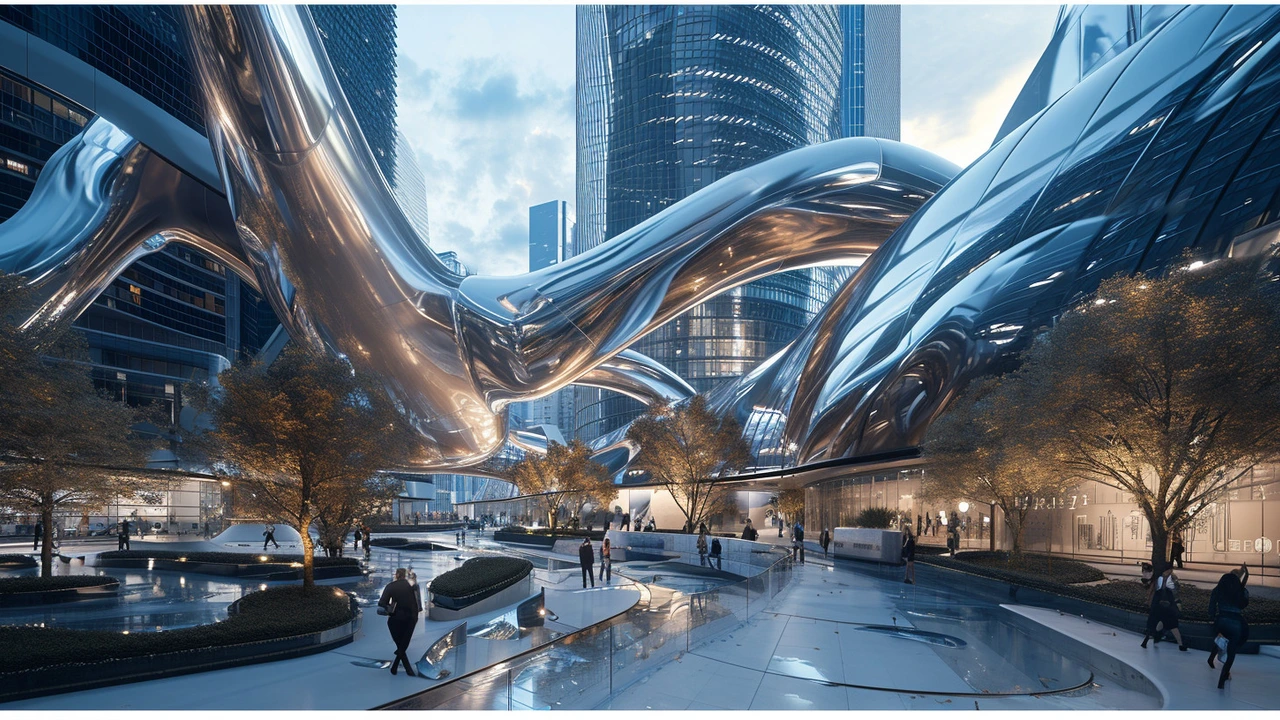Exploring Neo-Futurism in Contemporary Art and Architecture
 Jan, 23 2024
Jan, 23 2024
An Introduction to Neo-Futurism
First, let's break down what Neo-Futurism really is. It's kind of like getting a letter from the future, with today's postage stamp. This stylistic rocket ship took off as a progression from the early 20th-century Futurism, which itself was all about speed, technology, and youth. Now, as I walk through the bustling streets, I can't help but notice the sleek curves and glossy facades of Neo-Futuristic buildings popping up like metallic flowers in a digital garden. To understand this movement, you've got to acknowledge the pioneers like Zaha Hadid and her bold, gravity-defying structures which are like frozen silhouettes of tomorrow's world.
Neo-Futurism, it's not just about architecture; it seeps into art, design, and even fashion. Imagine being wrapped in the fluidity of a dress that looks like it was woven from strands of liquid metal or silver light - that's the kind of innovation we're talking about. This movement captures the dreams of a future that dances to the rhythm of technology and human ingenuity, pushing the boundaries to create an experience that's both tactile and transcendental. Futuristic art often speaks in a visual language of kinetic energy, playing with perceptions of space and time.
Defining Characteristics of Neo-Futuristic Design
So, you're wondering just what makes a building or a sculpture Neo-Futuristic? Look out for flowing forms that seem to defy the straight edge of the ruler. We're drawn to the energy that seems to pulse through the veins of a Neo-Futuristic creation. Sustainable materials and energy efficiency often sit at the heart of these projects, combining form with function in a way that does Mother Nature proud. Technology isn't just part of the design; it's woven into the very fabric of the concept, enabling structures to communicate with their surroundings and their inhabitants in the most intelligent of ways.
A great example to imagine is an airport of the future, where the very walls breathe with organic design, lights adjust to the mood of the travellers, and the roof is an interlaced pattern of solar cells, hard at work. Neo-Futuristic architecture also has a way of sneaking into public spaces - it might be a bridge that looks more like a sculpture than a path from A to B, or a park that's been designed to evolve with the seasons, using technology to enhance the natural world rather than replace it.
Celebrated Works and Architects of Neo-Futurism
There's no denying the star factor of certain Neo-Futuristic works. Take The Broad Museum in Los Angeles; it's like stepping into a science fiction movie set. Or the mind-bending silhouette of the Galaxy Soho in Beijing, which could easily be a headquarters for interstellar diplomats. When we talk about the maestros behind these creations, names like Santiago Calatrava come to mind, blending organic forms with skeletal structures to create masterpieces that are as much pieces of art as they are functional buildings.
Then there's the High-tech Innovation in Architecture Award awardee, Thomas Heatherwick, with his Vessel at Hudson Yards - a honeycomb of staircases that's both a monument and a playground. In art, look for pioneers like Tomas Saraceno, whose installations might not just be seen, but experienced through all senses, inviting you to interact with the work and question the space around you.
Tips for Appreciating Neo-Futuristic Art and Architecture
Want to truly get the Neo-Futuristic vibe? Start by looking at the big picture. How does the work interact with its environment? Notice the play of light and shadow, the materials chosen, and the way space is utilized. It’s often about more than just looking; it’s about experiencing and engaging. When you walk into a building like the London Aquatics Centre, let the waves of the structure wash over you, and take a moment to appreciate the feeling of motion encapsulated in concrete and steel.
Don't forget the influence of mother nature in these designs, where the organic is married with the technological. From the use of natural light to the integration of green spaces, there's an intention behind each element. Neo-Futuristic art and architecture aren't just designed to be seen; they're designed to be felt. Consider the emotional response it elicits and the thoughts it provokes. This kind of art and architecture is a dialogue, after all, between the creator, the viewer, and the future they imagine.